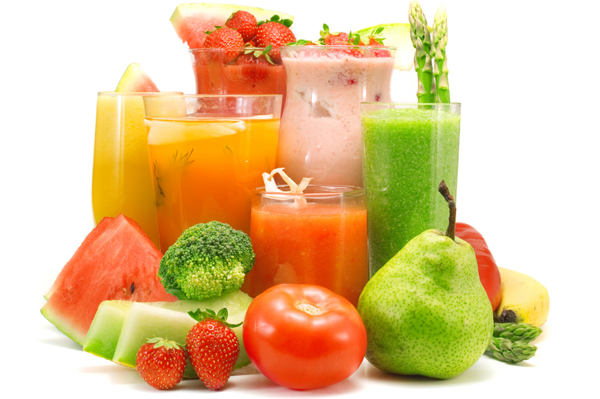Responsible Drinking (of Juice)

Juicing and green drinks have become chic and popular these days. Although I don’t juice often, I have joined the ranks of those who find juicing appealing for the benefit of packing in a lot of nutrients into a palatable and convenient form.
I like it when people get more non-glycemic veggies into their diets, and when they “drink their veggies” there are certainly many benefits. Juicing and green drinks come with a “Lindy Warning,” though. Whether they come directly from your juicer at home or from a store, juices need to be approached with caution. Here are the two big reasons:
1. Oxalic Acid
Certain vegetables contain a chemical called oxalic acid which can lead to kidney stones if the body is exposed to too much of it. This chemical can also interfere with the absorption of calcium. Certain individuals are more susceptible than others. This doesn’t mean you have to completely eliminate these veggies (they are packed with amazing nutrients), but you shouldn’t be consuming them in their raw state every day. Here’s the list:
- Rhubarb
- Spinach
- Swiss Chard
- Cassava
- Parsley
Other vegetables can be used liberally because they don’t contain a lot of oxalic acid. Here are few: cucumbers, celery, kale, and green and red peppers.
2. High Sugar
Ye doth protest and say, “But I don’t add any sugar to my green drinks and juices.” This may be true, but you could be packing in a lot of hidden sugar in form of fruits.
This is a common mistake because many of us mask the taste of vegetables with fruits. Let’s face it, we all like the taste of a sweet drink. But all these fruits can turn our “healthy” juice or drink into a monstrous concoction that has more sugar than a soda—all in the name of good health.
A good rule of thumb is to provide at least a 3:1 ration of vegetables to fruits and to limit these fruits: grapes, mangoes, pineapples and bananas. Fruits low in sugar include: Cantaloupe, apples, berries and lemons. (But these can’t be used willy nilly either.)
Ever reached for the ready-to-drink green drinks or juices in the grocery store refrigerated section? When we don’t have time to juice our own, this seems to be a healthy alternative. DANGER, Will Robinson!
Let me give you just one example. Naked Green Machine contains 33 grams of carbohydrate (in other words, sugar) in an 8 oz serving . One bottle is approximately 16 ounces (making the serving size half the bottle is another way consumers are duped), which means if you consume one bottle of Green Machine, you are getting 66 grams of sugar. This would put me into glycemic shock. I’m just giving an example and not trying to pick on Naked. There are many of these green drinks out there.
To give you a comparison, if you were to drink a 16 oz. Coca Cola, you would consume less sugar—61.5 grams. The top five ingredients in Green Machine are mostly glycemic fruits and the vegetables trail far behind. Manufacturers know we are addicted to a sweet taste and give our taste buds what they want. Don’t be fooled!
Responsible drinking (of juices) just means we are aware of what we are consuming in our juices and green drinks. They can be a wonderful, healthy, convenient, and great way to get concentrated nutrition. By reading this article. I’m hoping after you read this article you will always be prepared to drink responsibly.


0 Comments
No comments yet